- Home
- slideshows
- miscellaneous
- The best golf balls
The best golf balls
The best golf ball overall

The best golf ball for amateurs
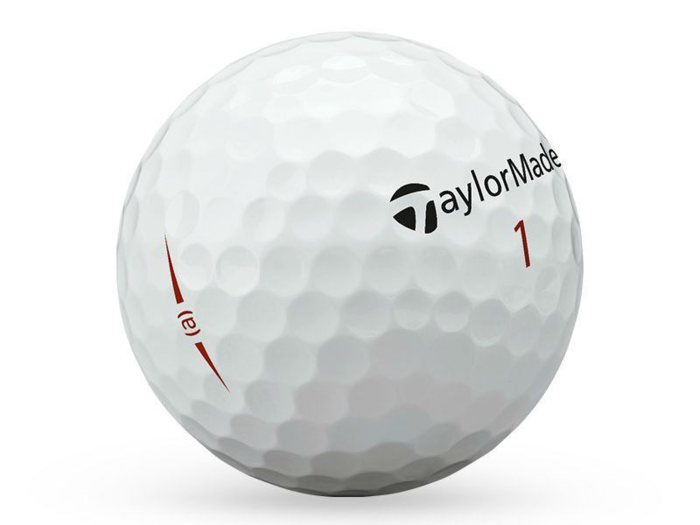
One of the best ways for mid-level amateur players to make a jump in their scores is to improve their performance on approach shots and around the green. To become a high-level golfer, learning how to spin the ball off iron and wedge shots will help quite a bit, as the right spin can help you keep the ball closer to the pin.
When you're just learning how to spin and control the ball, the best ball to help you is the TaylorMade Project (a). This ball, which has been upgraded in 2018, carries a high spin rate when struck properly.
Of course, if you don't strike it properly, it can cause a greater severity of hook or slice, according to Two Golf Guys, which means this TaylorMade ball probably isn't the best choice for high-handicap golfers. Still, this ball can potentially help a bogey golfer to start consistently shooting in the 80s.
TaylorMade uses a three-layer design to give the Project (a) golf ball its high level of spin. The better spin results should give mid-level handicappers the ability to keep the ball closer to the pin on approach shots, leading to shorter putts and better scores, according to Today's Golfer. However, you may notice more spin off the face of the driver, too.
Golf Info Guide says the TaylorMade (a) gives mid-level golfers the kind of performance that high-level golfers want from their golf balls, but at a lower price. This ball is so soft, it almost "sticks to the club face." One reviewer named C. Tanon loves the feel of these golf balls around the green, but also likes how they perform off the tee.
Another Amazon buyer named Rob likes the feel of these Project (a) golf balls, but says they scuff too easily.
Pros: High level of spin on approach and chip shots, good price point for such a responsive ball, TaylorMade recently gave ball a slight design upgrade, three-layer construction works great for many levels of golfers
Cons: Mis-hits will slice or hook more severely than other balls, thin cover on the ball will scuff easily
The best golf ball for straight flight
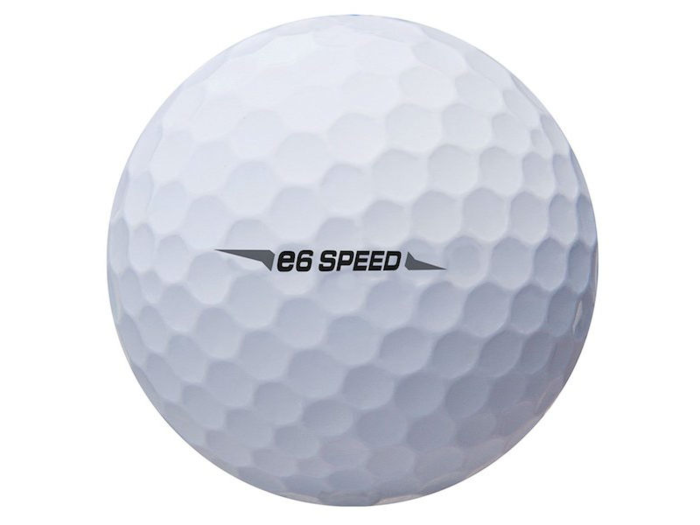
One of the biggest frustrations for mid-to-high-handicap golfers is hitting the ball straight. It doesn't take long to ruin a solid score by slicing your drive on the 12th hole into the trees and taking five shots to work your way out.
Certainly, improving your swing is the best way to avoid unwanted slices and hooks that leave you in big trouble off the tee. The Bridgestone e6 Speed golf ball can help you stay straighter off the tee, too, while also delivering a nice level of distance.
These golf balls carry a really nice price point, closer to the value end of the market than the top end.
Don't expect to have a lot of spin control with these Bridgestone balls, according to My Golf Spy, as the design of the e6 Speed causes for a slower spin rate, which provides a straighter shot.
Bridgestone is betting on the fact that for most amateur golfers who are fighting their swings a bit, a straighter ball is more beneficial than a spin control ball. The company uses a three-layer construction with the e6 Speed, but its middle layer works to reduce spin, rather than enhance spin like many three-layer balls.
The lesser amount of backspin does make it a little harder to hold the green on approach shots, according to Amazon buyer Evan Yarbrough, as the golf ball tends to bounce and roll forward without the backspin.
Plugged in Golf says the e6 Speed delivers several yards of extra length, as Bridgestone promises. It works well for amateur players who don't have a high club speed and exit velocity rate for the ball.
During tests, Golficity says keeping the Bridgestone e6 Speed in play both off the tee and from the fairway was easier than with other golf balls. Amazon buyer Storm says the e6 Speed plays well around the greens, too, all at a great price point.
Pros: Designed to reduce the spin of the golf ball for straighter shots, when struck properly should give you a bit more distance, works well for amateur players who don't have a high club speed, nice price point
Cons: Less backspin means it can be tougher to hold the green, not really made for advanced players who want ball control
The best value golf ball
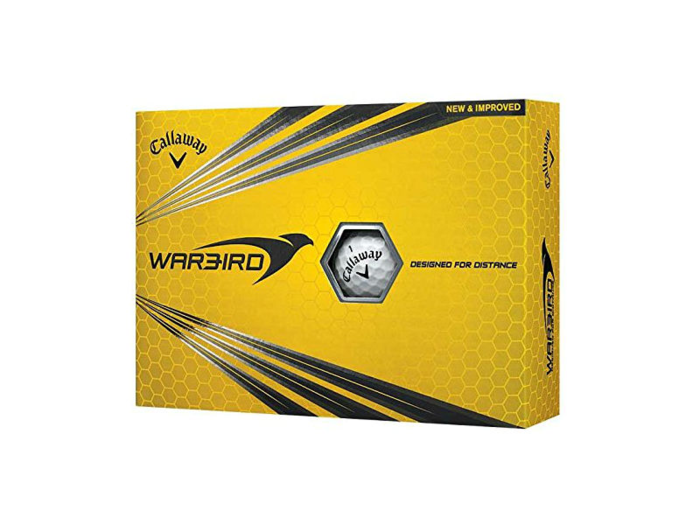
If you miss the old days where nearly every ball was a two-layer golf ball and where distance was the primary concern, the Callaway Warbird will give you that old school performance.
Don't mistake the Warbird as an old-time golf ball design, though. Callaway has created the Warbird with an extremely thin outer layer, which is common on modern golf balls. Yet, the company was able to maintain a low price point for these golf balls.
Even though the Warbird uses a really thin cover to try to maximize softness and feel, it's the excellent distance you'll receive with this ball that'll grab your attention. This two-layer design features a soft core that is larger than average, helping to give you good distance performance.
The Golf Info Guide review confirms that the Callaway Warbird's distance is impressive, especially off the tee. The aerodynamics of the dimple design on the surface of the golf ball allow it to perform well in windy conditions.
With its large core, the Warbird delivers a higher level of exit velocity off the club face than other types of value-priced golf balls, according to The Golf Spy, which results in more distance.
Golf Discount says the Callaway Warbird will better serve a high handicap player or a beginning player who isn't concerned about ball spin. The value price point of the Warbird also fits this type of player better.
Amazon reviewer CocoaBean likes the value and performance of the Warbird, saying it provided such good distance results that it required a rethinking of club selections.
As a trade-off for that extra distance, Amazon customer KWWRG says you won't receive much feel around the green with these balls, though.
Pros: Very nice price point, delivers a good distance off the tee and out of the fairway versus similarly priced balls, works nicely for beginning players, performs better than expected during high wind conditions
Cons: Doesn't give you a great sense of feel, only a two-layer golf ball that won't help low-handicap players
The best high-end golf ball
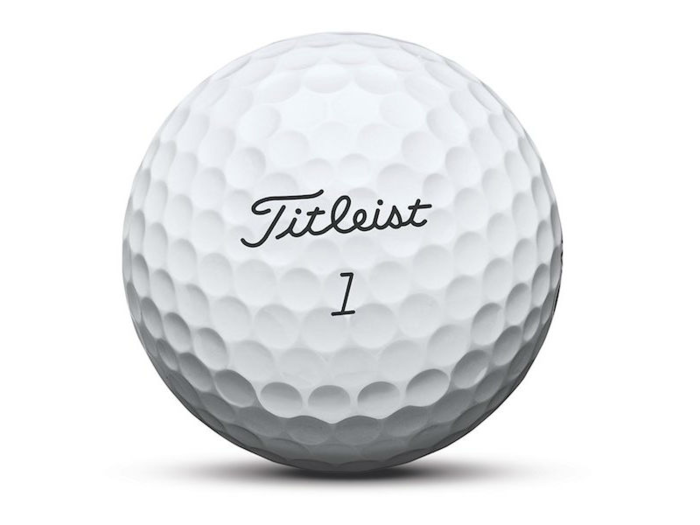
If you've paid attention to golf ball technology in the past couple of decades, you've almost certainly heard of the Titleist Pro V1. This golf ball has been in regular play since 2000 among low-handicap players.
Because of its nearly two-decade lifespan, you may be tempted to ignore the Pro V1 these days. However, don't let this top-of-the-line Titleist ball's age deceive you. Titleist's designers have continually improved the Pro V1 over the years, and the latest upgrade, done last year, keeps this ball at the top of its game.
The upgraded Pro V1 delivers exactly the feel and performance you'd expect, yet it's still a better ball than previous high-end Titleist balls, which, according to National Club Golfer, is no small feat for Titleist's designers to have achieved.
The Pro V1's new design is better, but the advancements are marginal over previous versions, Golf Monthly says.
The new Titleist Pro V1 design still uses a three-layer construction with a solid rubber core, a soft mantle layer, and an outer urethane cover. The primary difference in the latest version of the ball is that the large core doesn't spin as much, providing greater distance without sacrificing the feel of the ball that the cover and mantle layer provide.
The Pro Shop review says the Pro V1 still achieves a great level of spin for low handicap players, while giving you a consistent flight, thanks in part to the impressive dimple pattern. The Pro V1 now offers 352 dimples that cover the ball more evenly, helping create a better flight path.
Experienced players will simply love the complete performance they'll receive from the Titleist Pro V1, according to Golf a Lot.
Amazon reviewer Richard Cox says these golf balls are extremely expensive, more costly than he normally uses. But after playing with a found Pro V1, the ball's high level of performance pushed him toward buying a dozen.
Pros: New dimple design allows for straighter ball flight, yields excellent spin control on approach shots, will give low handicap golfers a good feel for shots, brand and model that's been at the top of the game for almost two decades
Cons: Very expensive golf ball, new version from last year isn't massively different from previous version
Things to look for in golf balls
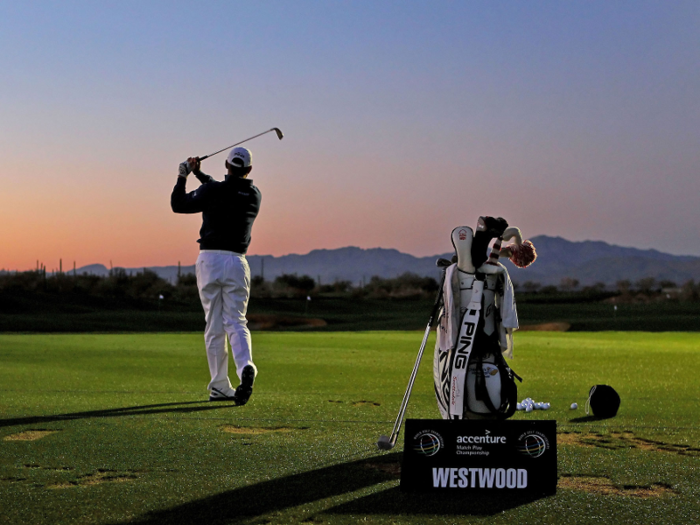
Levels of golf balls
- Tour: A tour level ball is one that professional golfers will play with, according to Dick's Sporting Goods. These are the most expensive golf balls, and they'll give you a high level of distance and spin control performance.
- Premium: The premium level ball fits in the mid-range of the golf ball market, both in terms of price and performance, according to Golf Info Guide. Average players will receive a nice ball that can enhance their games and help them work on shot making at the same time.
- Value: Inexpensive balls tend to have a limited number of features, but they'll work well for beginning and high-handicap players who are still developing their skills. They have a low price point, and many of them will work to yield a straight ball flight, which is nice for players who tend to mis-hit the ball more often.
Most mid-to-high-handicap players don't have the skills to manipulate a tour-level golf ball. If you cannot spin the ball to make certain types of shots, a premium-to-value-level golf ball should serve you well.
When your skills have advanced to the point where you're ready to try spinning and controlling the ball more precisely, you may want to switch to a high-end tour ball.
Design features of golf balls
Golf balls may look nearly identical on the outside, but the interior of the ball will vary quite a bit from model to model.
- Compression: The compression level of a golf ball measures the deflection of the ball when the club strikes it. You can see this compression in a series of high-speed photographs. An average compression rating on a ball will be 90 to 100. Higher compression rated golf balls require more club speed to compress the ball and create distance, but they tend to fly straighter. A lower compression rated golf ball will achieve good distance even with a slower club speed, says Golf Balls.com, but it may not be as easy to control.
- Layers: Golf balls can consist of anywhere from one to five layers, according to Golf a Lot. The rubber will have a different consistency and thickness in each layer. Balls with more layers will tend to cost more, as they're aimed at experienced players looking to gain a lot of spin control. Designers can really affect the distance and spin of the ball by making slight adjustments to the layers, according to Plugged in Golf.
- Spin: The design of the ball can be lead to a high, average, or low level of spin. Balls that generate more spin off the club face will give the low-handicap golfer more control around the green. Such balls typically have more layers, according to Golf Galaxy. But with a higher level of spin, mis-hit balls can slice or hook more severely than low-spin balls, which are aimed at beginning players.
Most golf balls are white, but you also can find bright yellow, orange, and pink golf balls. Color doesn't really affect the performance of the ball, but some people find it easier to follow the track of a yellow or orange ball in the sky. You also may have an easier time finding a brightly colored ball in the rough or in the trees versus a white ball, should you spend a lot of your golf round in those areas.
Advertisement